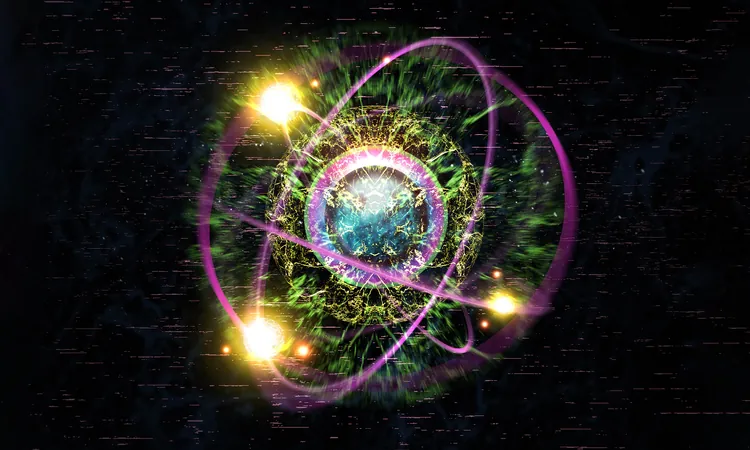
Scientists Uncover Groundbreaking New Category of Particles: Introducing Paraparticles!
2025-01-19
Author: Daniel
A Paradigm Shift: The Hunt for Paraparticles
For decades, the scientific community has operated under the assumption that no other types of particles existed beyond this binary framework. However, recent research led by Dr. Kaden Hazzard from Rice University, alongside collaborator Zhiyuan Wang from the Max Planck Institute of Quantum Optics, challenges this long-held belief. Their studies suggest that paraparticles may indeed have a place in our understanding of particle physics.
While their research utilizes sophisticated one- and two-dimensional mathematical models, the tantalizing possibility remains that these complex quasiparticles could emerge in our more familiar three-dimensional world. Dr. Hazzard emphasizes that particles are not simply fundamental entities, but rather intricate patterns that manifest in larger systems.
How Do Paraparticles Operate?
In their explorations, Hazzard and Wang delved deep into condensed matter physics, focusing on materials like magnets and densely packed systems where particle interactions are intense. Their advanced algebraic methods revealed that paraparticles could exhibit unique behaviors when occupying the same space as fermions and bosons—behavior that defies the traditional confines of particle classification.
According to Dr. Hazzard, "We determined that new types of particles we never knew of before are possible," marking a significant departure from the established scientific narrative.
The Potential Impact of Paraparticles
One might wonder about the practical implications of this newfound understanding. Recently, researchers have shown that a type of quasiparticle known as anyons holds promise for applications in quantum computing. Paraparticles may offer similar or even more groundbreaking possibilities for stable information storage and processing in quantum systems.
Hazzard notes that this research transcends disciplinary boundaries, weaving together theoretical physics and mathematics using methods such as Lie algebra, Hopf algebra, and group theory to explore the intersection of math and physical phenomena.
Could We Experience Paraparticles in Everyday Life?
Despite the remarkable implications of paraparticles, they are unlikely to visibly manifest in our daily lives. Current evidence suggests they may only arise under highly controlled experimental conditions or within exotic states of matter. Nonetheless, this opens up an avenue for future research, as scientists are eager to identify environments where paraparticles may be observed.
Looking Ahead: Future Experiments and Discoveries
Hazzard and Wang's pioneering research is still in its infancy. The early-stage mathematical models advocate for the possibility of paraparticle-like excitations within condensed matter systems—a call to action for scientists to investigate further. As researchers develop new experiments geared toward identifying these phenomena, even the slightest evidence of paraparticles could unlock a treasure trove of discoveries that challenge our existing theories.
The implications of such findings are profound, extending our comprehension of particle behavior and potentially reshaping our understanding of fundamental matter. For scientists worldwide, this potential heralds an age of discovery ignited by curiosity and the pursuit of truths that may have been lurking just beneath the surface of our known universe.
As Dr. Hazzard aptly puts it, “I don’t know where it will go, but I know it will be exciting to find out.” With this groundbreaking study recently published in *Nature*, the scientific community holds its breath in anticipation of what the future may hold for paraparticles and the universe at large.


 Brasil (PT)
Brasil (PT)
 Canada (EN)
Canada (EN)
 Chile (ES)
Chile (ES)
 Česko (CS)
Česko (CS)
 대한민국 (KO)
대한민국 (KO)
 España (ES)
España (ES)
 France (FR)
France (FR)
 Hong Kong (EN)
Hong Kong (EN)
 Italia (IT)
Italia (IT)
 日本 (JA)
日本 (JA)
 Magyarország (HU)
Magyarország (HU)
 Norge (NO)
Norge (NO)
 Polska (PL)
Polska (PL)
 Schweiz (DE)
Schweiz (DE)
 Singapore (EN)
Singapore (EN)
 Sverige (SV)
Sverige (SV)
 Suomi (FI)
Suomi (FI)
 Türkiye (TR)
Türkiye (TR)
 الإمارات العربية المتحدة (AR)
الإمارات العربية المتحدة (AR)